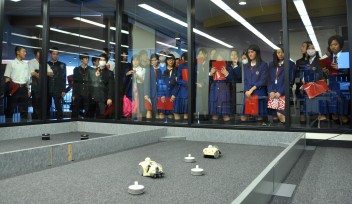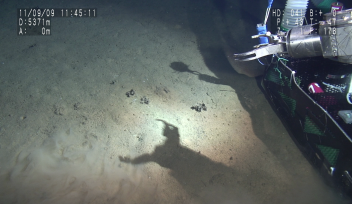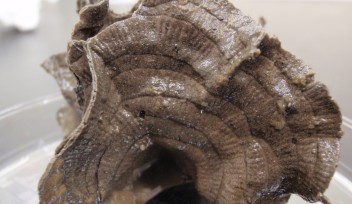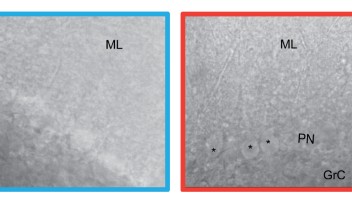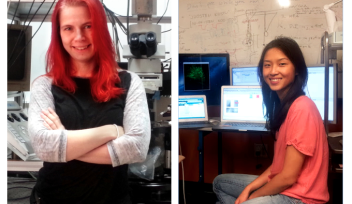A map highlighting species rarity—the areas with many ant species with very small ranges. The colored areas all indicate important regions for ant species with small ranges. Red indicates areas that are relatively more studied than other areas, which coul
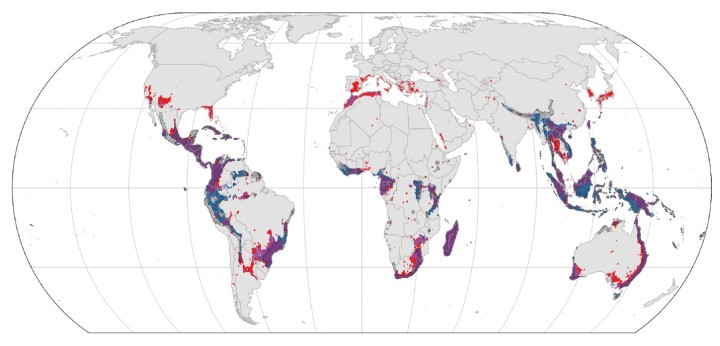
A map highlighting species rarity—the areas with many ant species with very small ranges. The colored areas all indicate important regions for ant species with small ranges. Red indicates areas that are relatively more studied than other areas, which could artificially boost their importance. Purple areas are both important based on current knowledge and are likely to remain so after future sampling. Blue areas are predicted by machine learning to harbor concentrations of undiscovered, small-ranged ant species, giving scientists a treasure map to guide future exploration. This image is an edited version of figures that appear in the paper.
A map highlighting species rarity—the areas with many ant species with very small ranges. The colored areas all indicate important regions for ant species with small ranges. Red indicates areas that are relatively more studied than other areas, which could artificially boost their importance. Purple areas are both important based on current knowledge and are likely to remain so after future sampling. Blue areas are predicted by machine learning to harbor concentrations of undiscovered, small-ranged ant species, giving scientists a treasure map to guide future exploration. This image is an edited version of figures that appear in the paper.
Copyright OIST (Okinawa Institute of Science and Technology Graduate University, 沖縄科学技術大学院大学). Creative Commons Attribution 4.0 International License (CC BY 4.0).










